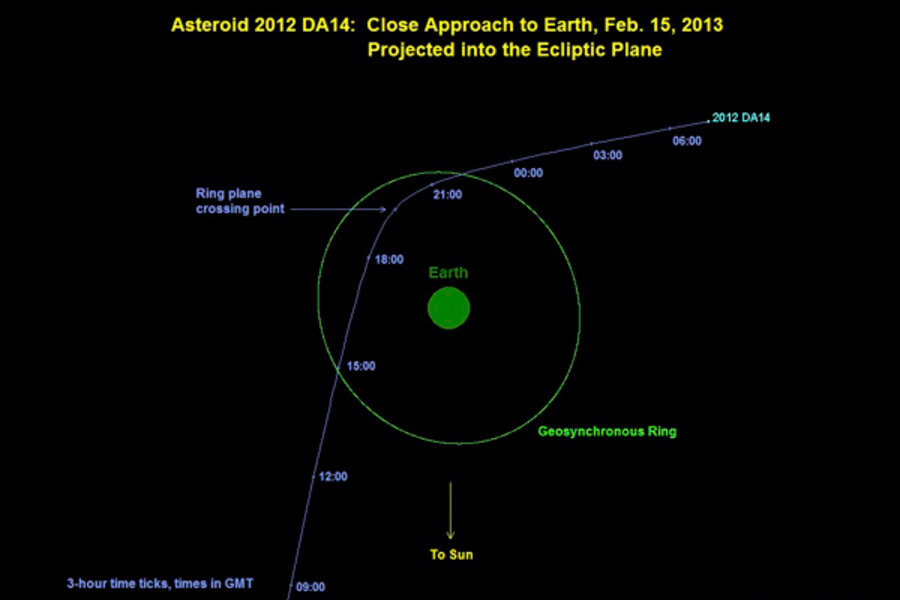Initially, astronomers hunted for objects half a mile wide or wider and found 862 – about 95 percent of all NEOs thought to be in this size class. Since 1995, they have counted smaller objects as well and have found a total of 9,730.
Of them, 1,379 are potentially hazardous, according to specialists at NASA’s Jet Propulsion Laboratory in Pasadena, Calif. These objects are at least 150 feet across, and their orbits bring them 7.5 million miles or closer to Earth. Some 155 of the potentially hazardous objects found so far are at least a half mile wide.
In 2005, Congress charged the National Aeronautics and Space Administration with locating and tracking objects 500 feet across or larger by 2020. Progress has been slow. NASA’s NEO budget stayed flat at about $4 million between 2002 and 2010, although it was increased to $20.5 million for fiscal year 2012.
The smaller the NEO, the more of them there are. Astronomers figure they’ve spotted less than 1 percent of all the NEOs 100 feet or larger – which still can pack a wallop.






